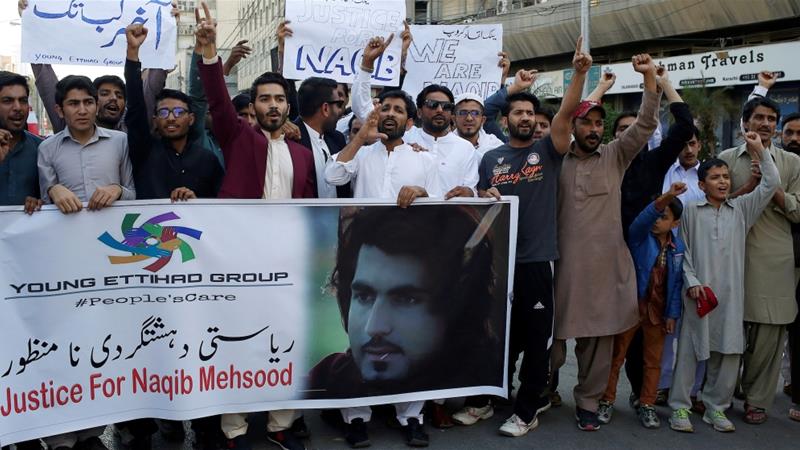
Will the Pashtun Tahhafuz Movement help transform not only Pashtun but Pakistani politics and provide space for all oppressed communities to finally have a say in their country of birth? Or will the establishment strike back and suppress this movement? Pakistan’s future will be shaped by the future of PTM and movements like this.
Newsweek Pakistan notes that “Pakistan risks tragedy if it does not heed demands of basic rights by Pashtun protesters.” Tracing the history, the article notes: “Decades ago, Pakistan made the decision to “preserve” the tribal society of the Pashtun by keeping them separate from the rest of the country, resulting in little development and enforcement of primitive laws. As the Pashtun population outgrew FATA, it spread to the rest of the country through internal migration, destroying the roots of Pashtun culture. Nobody paid attention to this until “internal” became “external” and residents of FATA migrated to the Middle East. Then the Afghan jihad spawned local warlords who destroyed the jirga system of the tribes, and mere savagery replaced Pakistan’s badly scuffed administration. After this, Pakistan had to suffer the consequences of the original decision to retain FATA as a kind of tribal museum, without schools and without economic development. Karachi in time became the most populous Pashtun city in the world. Because of lack of policy elsewhere, it too started to become lawless like FATA.”
Former Senator Afrasiab Khattak writes “It is for the first time that a nascent sociopolitical movement has successfully beaten back the monopoly of state controlled and corporate electronic and print media on access to information by the effective use of social media for spreading its message. This achievement is remarkable for the youth of a marginalised people living in an ‘ excluded area’ under the yet to be reformed colonial structures. But it is also important to remember that a strong wave of solidarity across the ethnic and regional boundaries attracted by the movement made this achievement possible.
Refuting insinuations “about the “engineered” nature of PTM” Khattak states: “Those who have raised no objection over Afghan Taliban Amir accepting oath of allegiance of Pakistani Taliban are perturbed over popularity of Pashteen cap across the Durand Line as an act of solidarity for peace in both countries! PTM has repeatedly stated that it stands for the rights of oppressed people within the limits of Pakistani Constitution but the intelligence agencies are orchestrating artificial and so called demonstrations against PTM to give the impression as if the the youth movement is a threat for the country. It is particularly weird in a country where 139 UN designated terrorist entities don’t face the type of hounding and maligning that is faced by a grass roots non violent human rights movement.”
Ending on a note of caution Newsweek Pakistan points out: “The truth is that the Pashtun represent the failure of Pakistan to become a normal state. The country was divided into Bangladesh and Pakistan in 1971 because of the mistakes it made in its evolution. Now the Pashtun want a correction that Pakistan would do well to understand before it suffers yet another tragedy.
![]()





